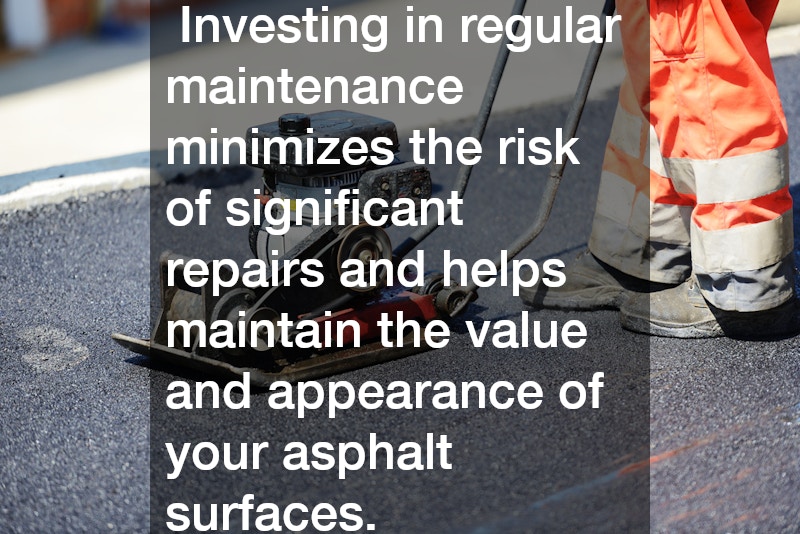Asphalt Maintenance Tips to Extend Your Pavements Life
Proper asphalt maintenance is crucial for extending the life of your pavement. By employing the right strategies, you can avoid costly repairs, enhance safety, and maintain the aesthetic appeal of your surfaces. This article addresses common questions and provides practical tips to help you effectively care for your asphalt pavement.
How Often Should You Sealcoat Your Asphalt?
Importance of Regular Sealcoating
Sealcoating plays a vital role in maintaining the integrity of asphalt surfaces. It acts as a protective barrier, shielding the pavement from harmful UV rays that can cause oxidation and deterioration. Additionally, sealcoating prevents water penetration, which can lead to cracks and potholes.
By applying a sealcoat periodically, you help safeguard the pavement against daily wear and tear. This protective layer also enhances the appearance of the asphalt, giving it a fresh, cohesive look. Ultimately, regular sealcoating can save money in the long run by reducing the frequency of major repairs.
Without sealcoating, asphalt surfaces are prone to faster degradation due to exposure to the elements. This can significantly reduce the lifespan of the pavement, making frequent maintenance more frequent and costly. Proper sealcoating is essential for maintaining both functionality and aesthetics.
Determining the Right Sealcoating Schedule
Determining the appropriate sealcoating schedule depends on a variety of factors. Climate plays a significant role; areas with harsh winters or intense heat may require more frequent applications. Traffic volume is another critical factor, with higher traffic areas deteriorating more quickly.
To assess the need for sealcoating, check for signs of wear such as the fading of the pavement’s black color or the appearance of small cracks. Adhering to a regular schedule, such as every two to three years, can help maintain optimal pavement condition. However, it is important to tailor the schedule to your specific conditions and needs.
Consulting with a professional can provide additional insight into the best sealcoating timeline. Experts can evaluate the pavement’s current state and offer recommendations for timing and frequency. This ensures that maintenance efforts are both effective and efficient.
What are the Signs Your Asphalt Needs Repair?
Identifying Surface Damage
Surface damage on asphalt can manifest in various forms, with cracks being among the most common. Potholes represent more severe surface degradation and pose significant safety hazards to both vehicles and pedestrians. Fading of the asphalt surface, indicated by a dull grey appearance, can also suggest that the protective surface layers are wearing down.
Addressing these surface issues promptly can help preserve the integrity of the pavement. Cracks, when left untreated, can expand and lead to more severe damage. Similarly, potholes can worsen quickly, especially when exposed to water and heavy traffic.
Visually inspecting your pavement regularly can help identify these issues early. Proactive maintenance can prevent small problems from becoming larger, costlier repairs. Acting promptly can extend the lifespan of the asphalt and improve overall safety and appearance.
Assessing Structural Problems
Beyond surface issues, structural problems can severely undermine the stability of asphalt pavements. Base failures occur when the underlying foundation collapses or weakens, leading to significant surface distortions. Inadequate water drainage can exacerbate these issues, as water pooling undermines the foundational support.
Identifying these structural problems necessitates a comprehensive assessment by an experienced professional. Signs such as uneven surfaces or persistent water pooling, even after drying periods, should be closely examined. Addressing these problems often requires more invasive interventions, such as excavation and rebuilding the base layers.
Preventative measures, such as ensuring proper drainage systems and using high-quality materials during original construction, can minimize the risk of structural failures. Regular maintenance and monitoring remain essential for early detection and intervention. Investing in quality repairs at the right time can prevent costly structural failures down the road.
What is the Proper Way to Perform Asphalt Crack Filling?
Choosing the Right Crack Filling Materials
Selecting the appropriate crack filling material is crucial to the success of repair efforts. Asphalt emulsion, rubberized asphalt, and hot pour are commonly used materials, each with distinct properties. Rubberized asphalt, for example, is excellent for flexibility and movement, making it suitable for larger, more dynamic cracks.
Understanding the nature of the cracks you are dealing with can guide the choice of material. Hairline cracks might only require sealant, while larger gaps call for more robust filler. It is essential to match the filler with the durability and flexibility requirements of the specific type of crack.
Consulting product specifications and professional advice can ensure the selection of the most effective material. Appropriate material usage prevents future complications, thus prolonging the repairs’ effectiveness. Properly filling the cracks can significantly reduce the likelihood of further damage and extend pavement longevity.
Application Techniques for Long-lasting Repairs
Executing the crack filling process with proper techniques ensures that repairs are effective and durable. Use tools that allow for precise application of the filler, ensuring it is forced deep into the crack. Avoid overfilling as it can prevent proper adhesion and curing of the material.
After the filler is applied, smoothing over the top with a spatula or trowel can enhance the seal and facilitate an even finish. Allow for adequate drying and curing time, as recommended for the specific filler material used. Following the manufacturer’s guidelines is critical for achieving long-lasting repairs.
Consistent inspection of filled cracks can help identify any areas needing reapplication or touch-ups. These periodic evaluations can ensure continued durability and prevent minor issues from escalating. Expert application techniques vastly improve the success rate of asphalt crack filling endeavors.
Consistent maintenance of your asphalt pavement through sealcoating, timely repairs, and crack filling can significantly extend its life. By following the tips outlined in this article, you can ensure that your pavement remains safe, functional, and visually appealing for years to come. Investing in regular maintenance minimizes the risk of significant repairs and helps maintain the value and appearance of your asphalt surfaces.






